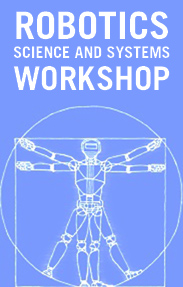
Collective decision-making by ant colonies: Linking group and individual behavior
Stephen Pratt
Social insect colonies carry out elaborate and highly coordinated behavior in the absence of any central control. Understanding this process requires identification of the behavioral algorithms followed by individual insects and may also inform the development of analogous algorithms in artificial swarms. I will describe one such insect algorithm, used by colonies of Temnothorax ants to collectively choose the best among several potential nest sites. I will describe how the ants are able to tune this algorithm to trade off the speed and accuracy of their decision-making, as conditions demand. I will also emphasize the algorithm's reliance on a threshold rule, an apparently widespread feature of collective decision-making by animals. Under this rule each ant conditions her choice of a given option on the number of her fellow ants that have also chosen that option. This rule may increase the precision of the colony's decision-making, by preventing the amplification of errors by single ants. Finally, I will present experimental evidence and a simple model for how the ants may detect the presence of a threshold population by monitoring their encounter rate with other ants. These results underscore how an algorithmic interpretation of animal behavior can help us to understand the emergence of complex group phenomena.
